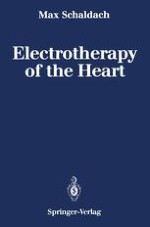1992 | OriginalPaper | Chapter
Pacemaker Power Sources
Author : Prof. Dr.-Ing. Max Schaldach
Published in: Electrotherapy of the Heart
Publisher: Springer Berlin Heidelberg
Included in: Professional Book Archive
Activate our intelligent search to find suitable subject content or patents.
Select sections of text to find matching patents with Artificial Intelligence. powered by
Select sections of text to find additional relevant content using AI-assisted search. powered by
Semiconductor microelectronics has played the same important role in the development of the implantable pacemaker as in the technology of electrochemical power sources. Well over five million patients have benefitted from the use of battery-powered implantable devices. The lithium battery has evolved into the principal power source since its introduction in 1972 [207]. The lithium-based primary cell has dominated pacemaker technology since the early 1980s, requiring power sources capable of delivering currents in the 10 to 100 microampere range. Compared to other electronic applications, the amount of energy required to operate a cardiac pacemaker is very small. In general, a stimulus pulse of 5–19 mA is delivered at 1–10 V for 0.25–1.0 ms with a rate from 30–150 bpm. For a typical application, a stimulus pulse of 10mA is delivered at 5 V for 0.5 msec at 70 bpm. Assuming a pacing rate of 70 pulses per minute, the average continuous energy drain is 30 µW.
